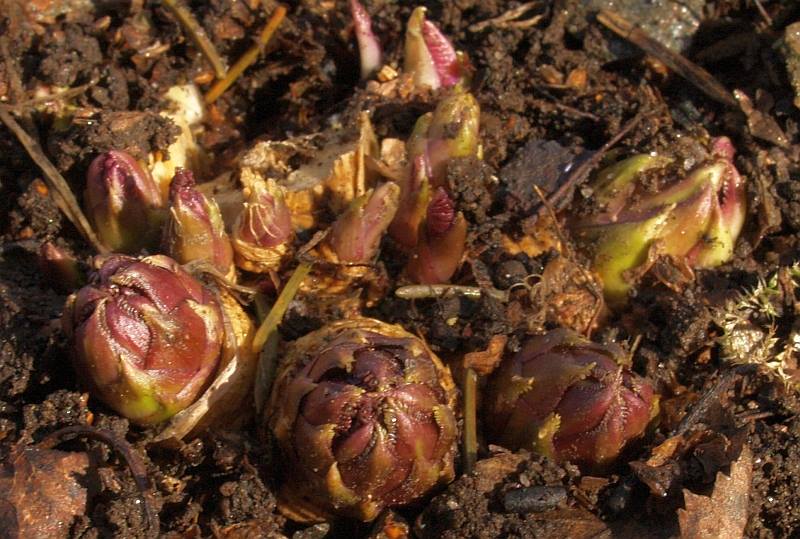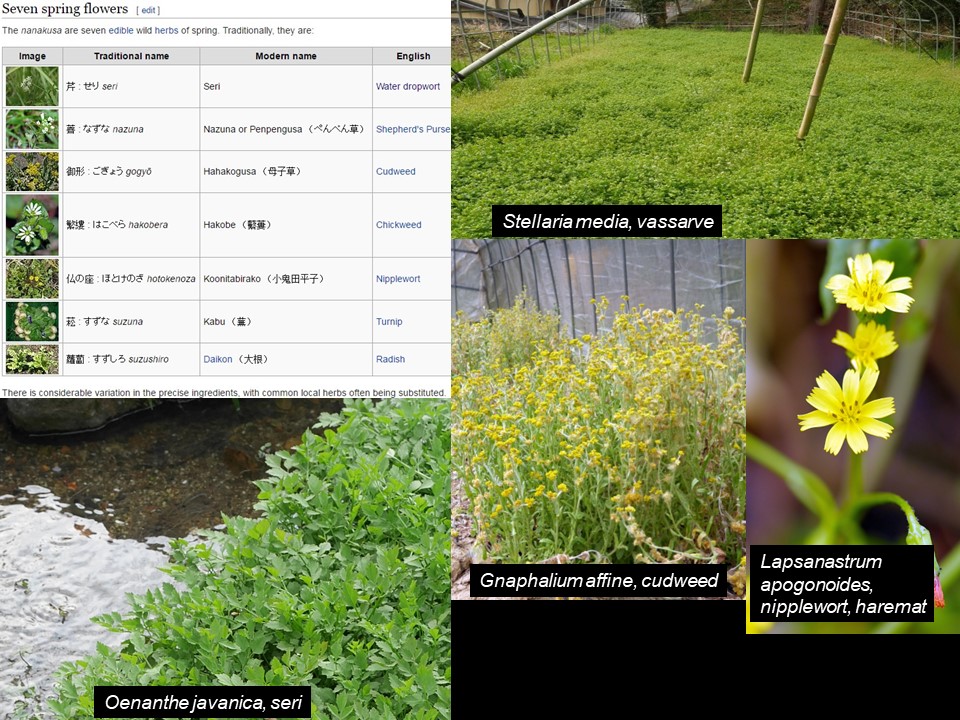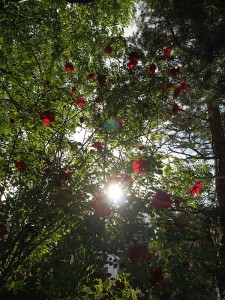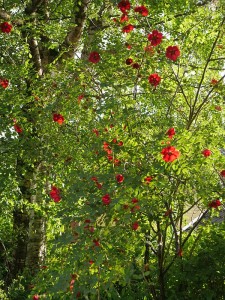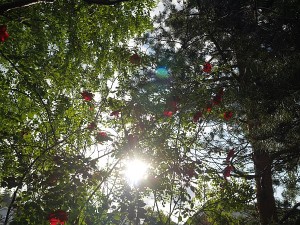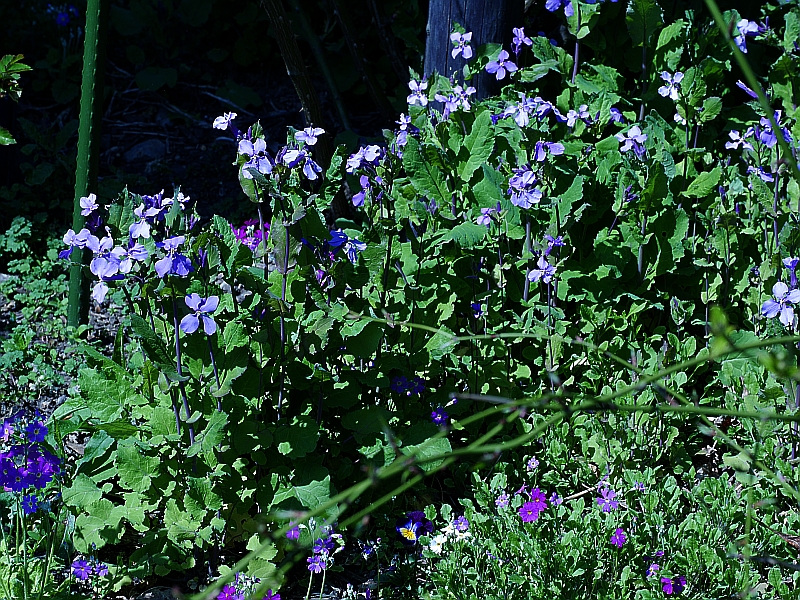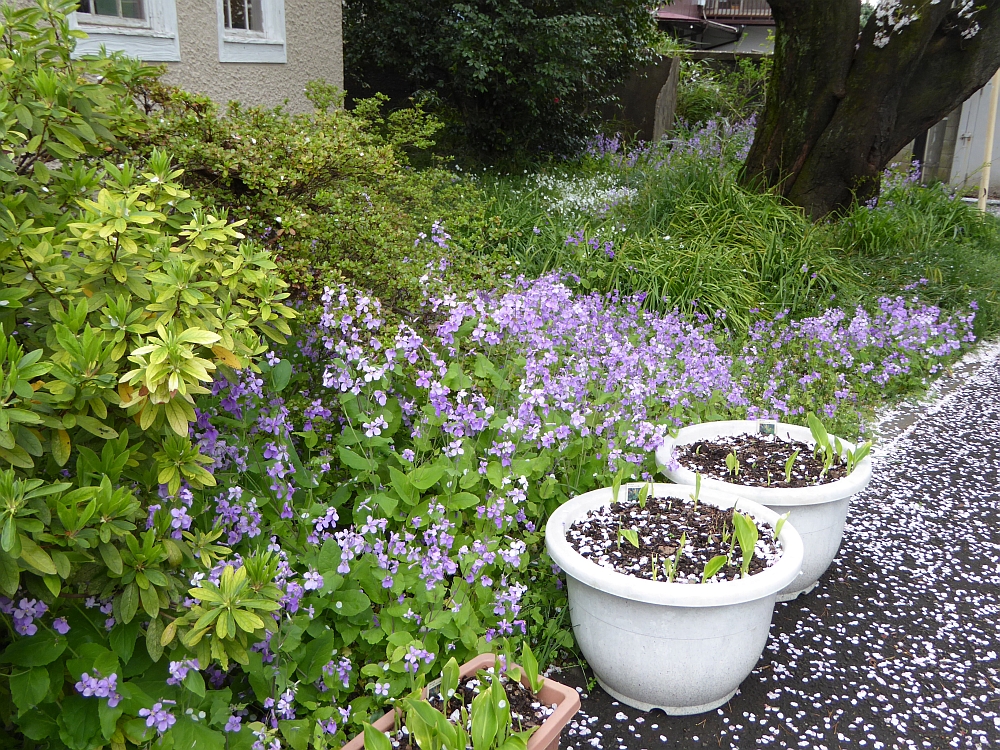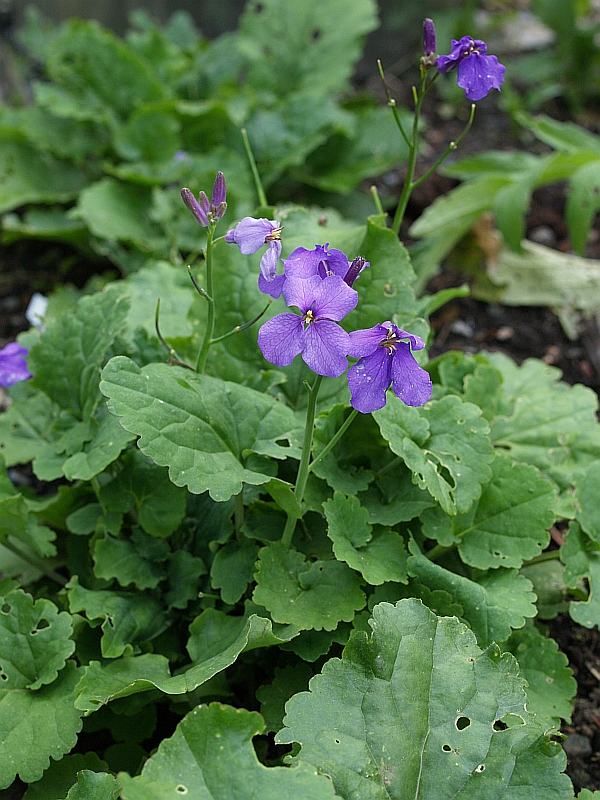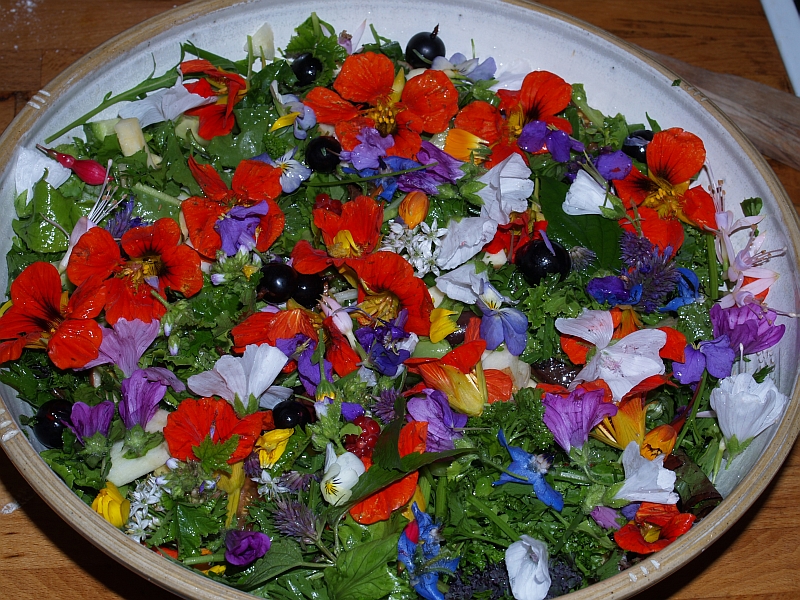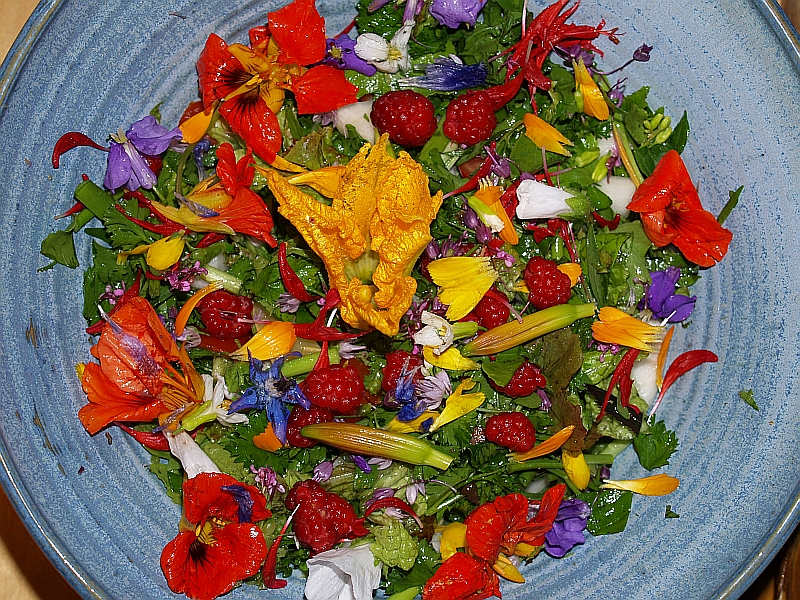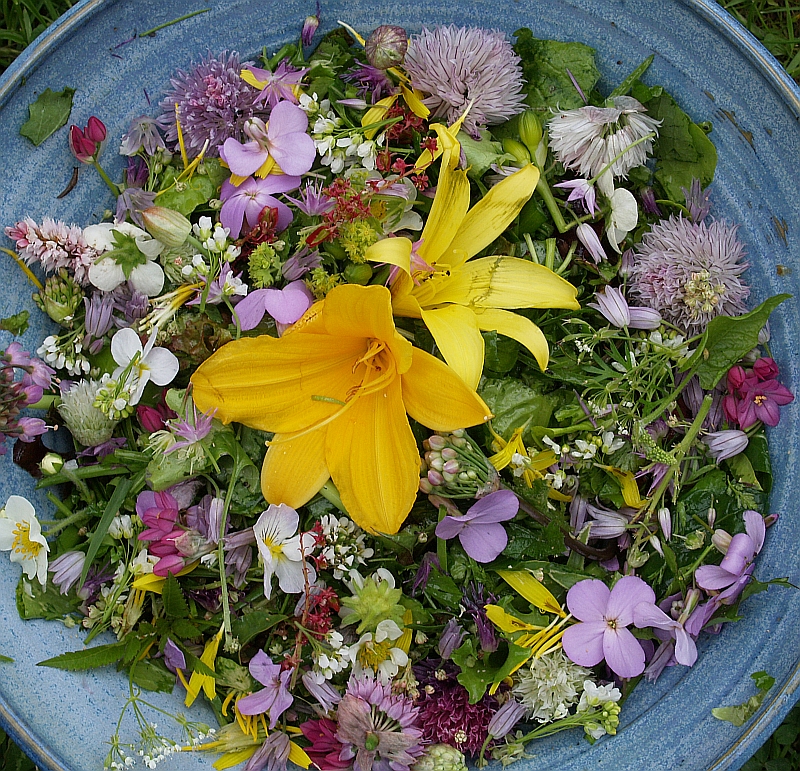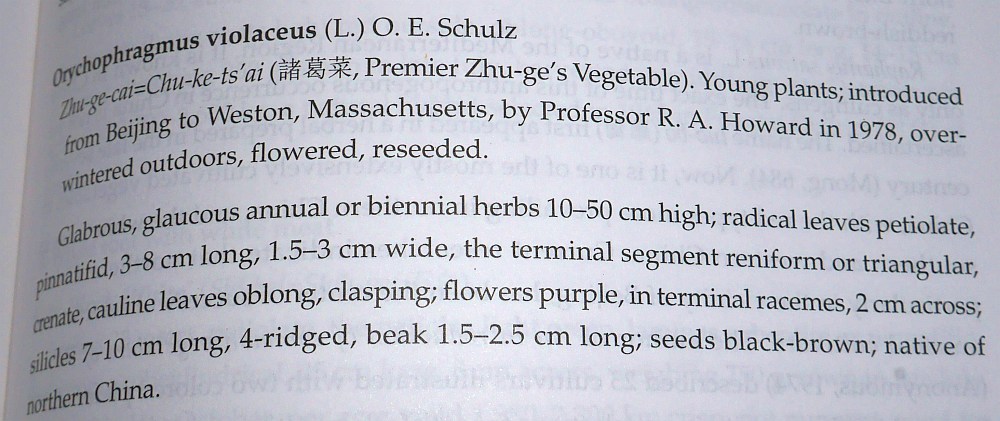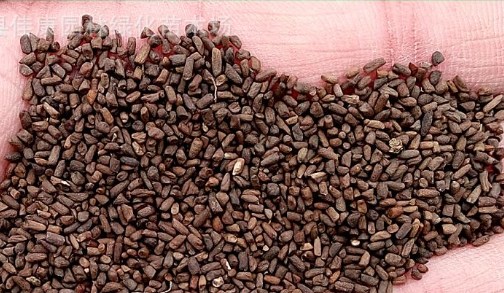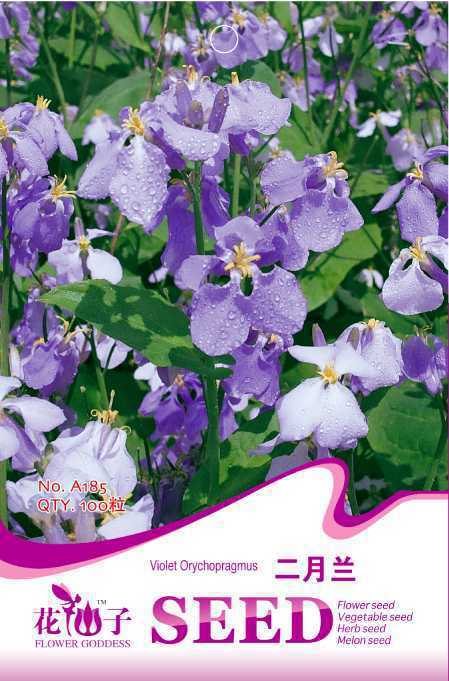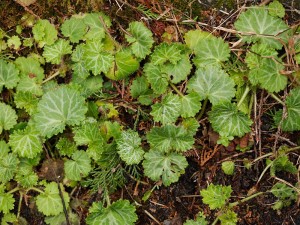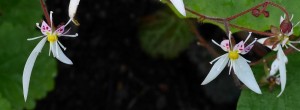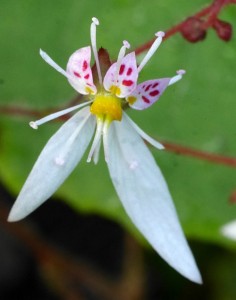A new video on my youtube channel, the wonderfully exclusive SNOW ONION from the China and the Himalaya https://youtu.be/5mOcQ4aUQVI
We’re back in the Onion Garden Chicago at the Ringve Botanical Garden in Trondheim, Norway on 10th May and the first Allium is in flower. It’s Allium humile, known as the snow onion (snøløk) and one of my favourites and one of the world’s most exclusive foods, known from the ethnobotanical literature to be wild collected both in Kashmir, where it has also been domesticated in kitchen gardens and sold in markets, and in the northernmost Indian state of Himachal Pradesh. Before you ask, I have no idea where you can get hold of seed or plants – my plants are sterile (no seed) – an exceptionally rare edimental (the garden website is here https://www.ntnu.edu/museum/the-onion-garden)

Tag Archives: China
A diversity of rat’s tails
I remember years ago ordering seed of a special heirloom heritage radish “rat’s tail” (Raphanus sativus var caudatus) through the Heritage Seed Library in the UK. I remember that it was the gardener at naturalist Gilbert White’s House and Gardens at Selbourne in Hampshire that offered the seed and I remember that we ended up trading seed as they were looking for plants that Gilbert White mentioned; see https://gilbertwhiteshouse.org.uk/gilberts-gardens
The resultant plants had long green pods. However, I lost them eventually. Subsequently I’ve tried seed of rat’s tails several times and the pods have never been as long as those original plants.
Radishes are difficult to grow here in spring as our long days result in them quickly bolting (still looking for a good day neutral variety). I remember reading that when wild radish Raphanus sativus was originally domesticated in China that it was for the young seed pods rather than the swollen tap roots.
I therefore decided this winter to source various rat’s tail radishes from commercial sources and also obtained seed of 4 (of 8 available) accessions from the German genebank IPK Gatersleben. There was no available descriptons, so this was a random selection. They were sown in May in the World Garden (Verdenshagen) at the Væres Venner Community Garden (NB! I do grow a few annuals on the world garden if they have an interesting geographical story associated).
Yesterday I harvested a few of each and was blown away by the diversity with long red, thin green and two more stumpy varieties like I had been getting in recent years when ordering rat’s tails. Below is what Cornucopia II says on this interesting vegetable.
Assuming like me that you will want to grow your radishes to seed for the following year, the land is occupied all season in any case, so rat’s tails produce more than root radishes. The flowers are also also rather pretty bicoloured pink and white and area also attractive to pollinators! I think I will save seed and deveop a mixed grex of these and more varieties from the gene bank next year!
And this gave the opportunity for a unique rat’s tail salad for lunch with radish flowering tops too, also delicious (see the pictures at the bottom) :)
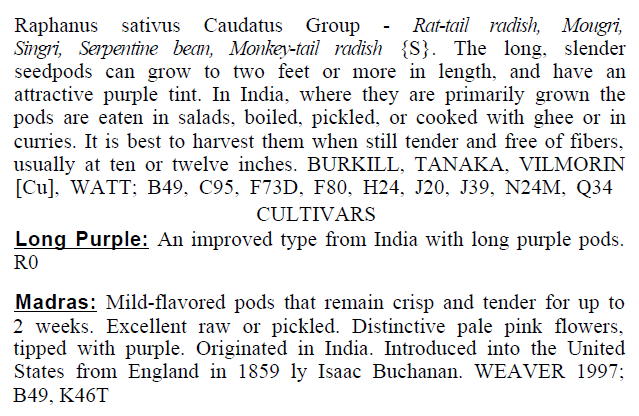




cc
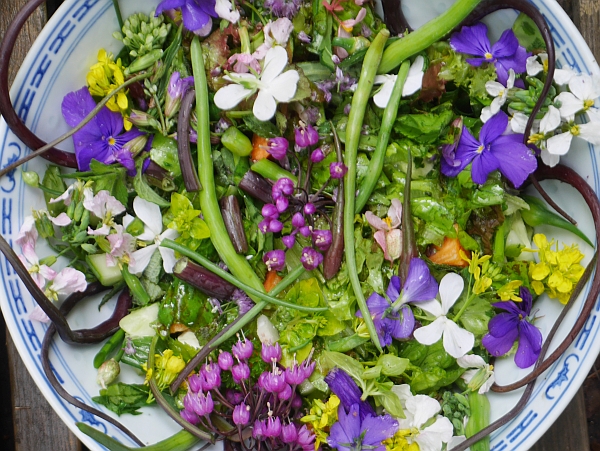
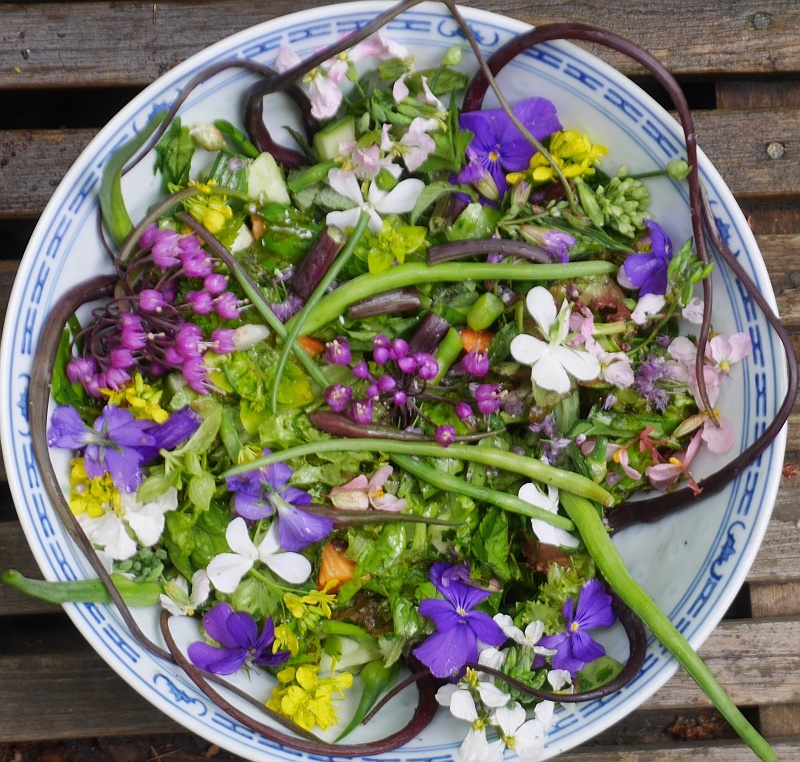
Megacarpaea delavayi
Seven Vegetable Dishes
In Denmark’s major ethnobotanical work, Brøndegaard’s Folk og Flora (1978-80), ground elder (skvalderkål; Aegopodium podograria) is one of seven different greens used in a once common health-bringing springtime dish, skærtorsdagssuppen (skærtorsdag=Maundy Thursday) and I included this in my book as a number of perennials were among the ingredients as they are at their best around Easter when this dish was served: The number 7 is considered lucky in different cultures around the world and is often seen as highly symbolic. This Danish dish is related to the northern England dish Dock Pudding, which has very similar ingredients (see Easter Ledge Pudding in my book Around the World in 80 plants).
The number 7 is considered lucky in different cultures around the world and is often seen as highly symbolic. This Danish dish is related to the northern England dish Dock Pudding, which has very similar ingredients (see Easter Ledge Pudding in my book Around the World in 80 plants).
After my book was published I came across another seven vegetable dish from Japan, nanakusa, which contains an unusual mix of edible plants (see the first slide below – from my talks over recent years) including perennial Oenanthe javanica (seri) and as fate would have it, on my study tour to Japan, organised by my friend Aiah Noack, I was taken to a farm where they were actually producing several of these herbs (pictures below). Greenhouses full of common chickweed (Stellaria media; vassarve) was a sight I won’t forget easily! Today, 7th January, is the Festival of Seven Herbs or Nanakusa no sekku (Japanese: 七草の節句) and is the old Japanese custom of eating seven-herb rice porridge on this day.
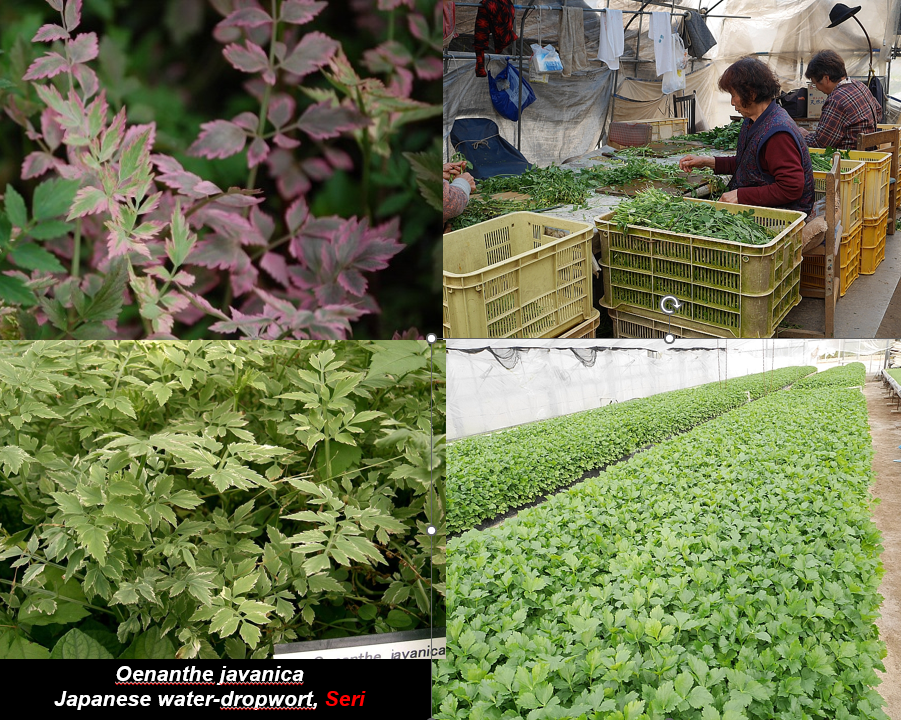
As I was writing this I wondered if there were other seven herb traditions out there and, right enough, a quick google search revealed two others (please let me know if you know of others):
Seven vegetables on the seventh day of the Chinese New Year is eaten for luck and health, a tradition perserved by the Teochew or Chaoshan people in Southern China. The following five vegetables must be included, the other two are flexible: celery, garlic, green onions, coriander and leeks.
Seven vegetable couscous: Seven is a lucky number in Jewish tradition and a dish featuring seven vegetables is a New Year favourite among Sephardic Jews (early autumn). A recipe can be seen here: https://theveganatlas.com/seven-vegetable-couscous
Red is the rose
The Edible Japanese Bluebell!
I finally realized that it was a plant I had grown for a couple of years (2011-2012) as an unusual annual vegetable, Orychophragmus violaceus, known as ‘Chinese Violet Cress’ or ‘February Orchid’, sourced from Horizon Herbs in the US. Despite one of its common names, it’s not an orchid but is related to cress, belonging to the cabbage family Brassicaceae.
It hadn’t grown particularly well in my garden, but it did manage to flower and I used them in various salads during those two years, adding a different colour to the mix and it continued flowering right to the first frosts in November! It was also badly attacked by the usual pests of Brassicas, but it bounced back with masses of shoots from the roots in the autumn when the pest pressure was released. It doesn’t like temperatures below -5C and therefore didn’t have much chance of overwintering here in Malvik (it is biannual in the Far East).
Orychophragmus violaceus has a wild distribution in China and Korea and was introduced to Japan a long time ago both as an ornamental and also as a potential oil seed crop (you can google pictures of it growing alongside rape oil plants). In the wild it has a wide range of habitats from woodlands, gardens, roadsides and open fields. In Japan it has widely naturalized in many habitats thanks to its adaptability and it is now found throughout the islands, encouraged by gardeners who love the early spring flowers. In some parts it carpets woodlands in the early spring and it has been described as the Bluebell of Japan! However it is also a weed in gardens (and as such one of the world’s most beautiful weeds!). In Japan it is known as hanadaikon (“flower-daikon”), which name is also used for Hesperis matrionalis (dame’s violet), ooaraseitou, murasaki-hana-na (“purple-flower-rape”), shikinsou (“purple-gold-plant”). Shokatsusai / zhu ge cai is its Chinese name.
It has also been used as a forage species in China:
“Its shoots are rich in protein, iron, calcium and vitamins A and C. Hence it is a valuable forage. Its shoot yield is high, about 36,400 kg/ha, when cultivated in Chengdu. This plant species is adaptable to grassland, barren hills, roadsides, gardens, etc. Its protein content is higher than most other forage plants.”
Orychophragmus violaceus is mentioned as an edible wild plant alongside Udo (Aralia cordata) in Joy Larkcom’s Oriental Vegetables!




